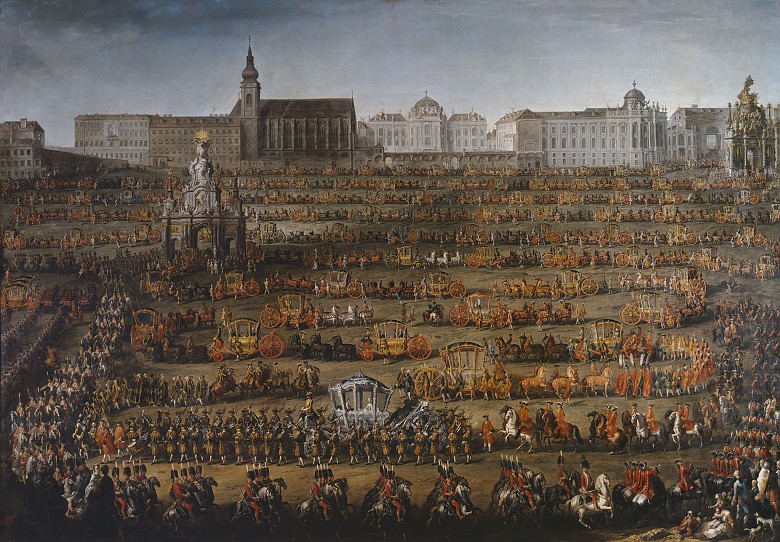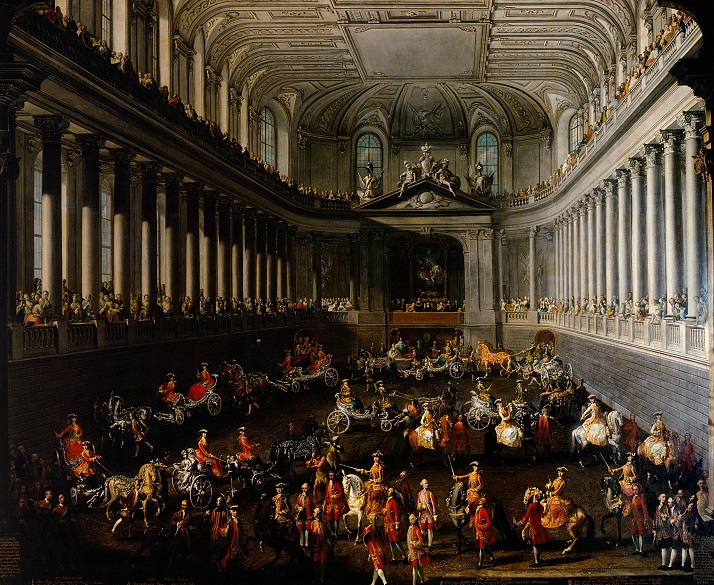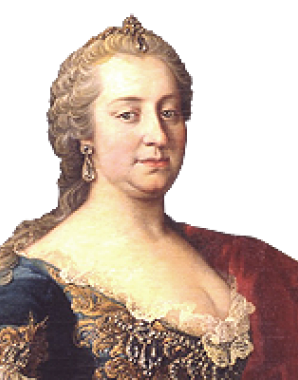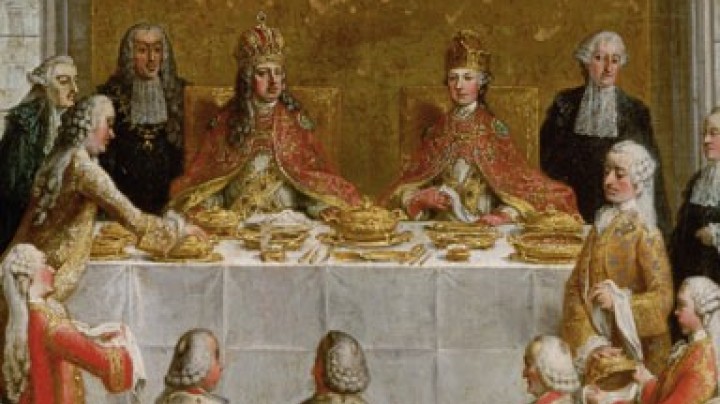Celebrating with Maria Theresa – the ceremonial paintings at Schönbrunn
They seem like a snapshot of a world long past: the large-scale ceremonial paintings that today still adorn the walls at Schönbrunn Palace, witnesses to an important epoch of courtly culture and the reign of Maria Theresa.
A seemingly unending parade of splendid coaches, horsemen and lackeys winds its way towards an urban panorama in the background: the grand entrée of Isabella of Parma into Vienna in October 1760 was the culmination of her bridal journey to meet her husband-to-be, Archduke Joseph. The later emperor Joseph II was married to the Bourbon princess for political reasons, and this new alliance with a former arch-enemy had to be staged with the greatest possible degree of pageantry and pomp. In order to ensure that this grand event endured in the memory of all the courtiers, ambassadors and aristocrats, Maria Theresa’s court artist Martin van Meytens was commissioned to document the festivities in a series of five monumental paintings known as the Wedding Cycle which depicts various stages of the nuptial festivities with almost documentary precision. It shows the hierarchy of court society, the imperial family at the banqueting table and the magnificent appointments of the rooms. Contemporary written records confirm that this is a more or less accurate depiction of how it looked.
If the heir to the throne’s marriage was a political act, this was even truer of coronations. When Joseph was elected and crowned Roman-German king in Frankfurt in 1764 in his father’s presence, he was accompanied by several artists who were tasked with making an accurate and detailed record of the venerable coronation rites. These sketches subsequently served as the basis for the six-part Coronation Cycle executed at Meytens’s Vienna studio. Viewers were intended to be overawed by the sheer scale of the paintings and persuaded of Joseph’s dignity and majesty. However, the depiction of the hundreds of bystanders and participants at the ceremonies was also meant to express the idea that the emperorship reflected the unity of the Holy Roman Empire, that it was tied to the support of the electors, and that every individual had a place within this divinely sanctioned realm.
One particularly special painting shows the Ladies’ Carousel held by Maria Theresa to celebrate the retaking of Prague in 1743. Here selected noblewomen took on ‘male’ roles by participating in a kind of joust. The picture captures not only a single event but also a phase in which Maria Theresa was stabilizing her rule as a female monarch as well as a turning point in the War of Austrian Succession. Like almost no other picture from this time, it shows a court dominated by women – a precious memory for Maria Theresa, who commissioned the painting for Schönbrunn Palace in 1767, twenty-four years after the event.

















